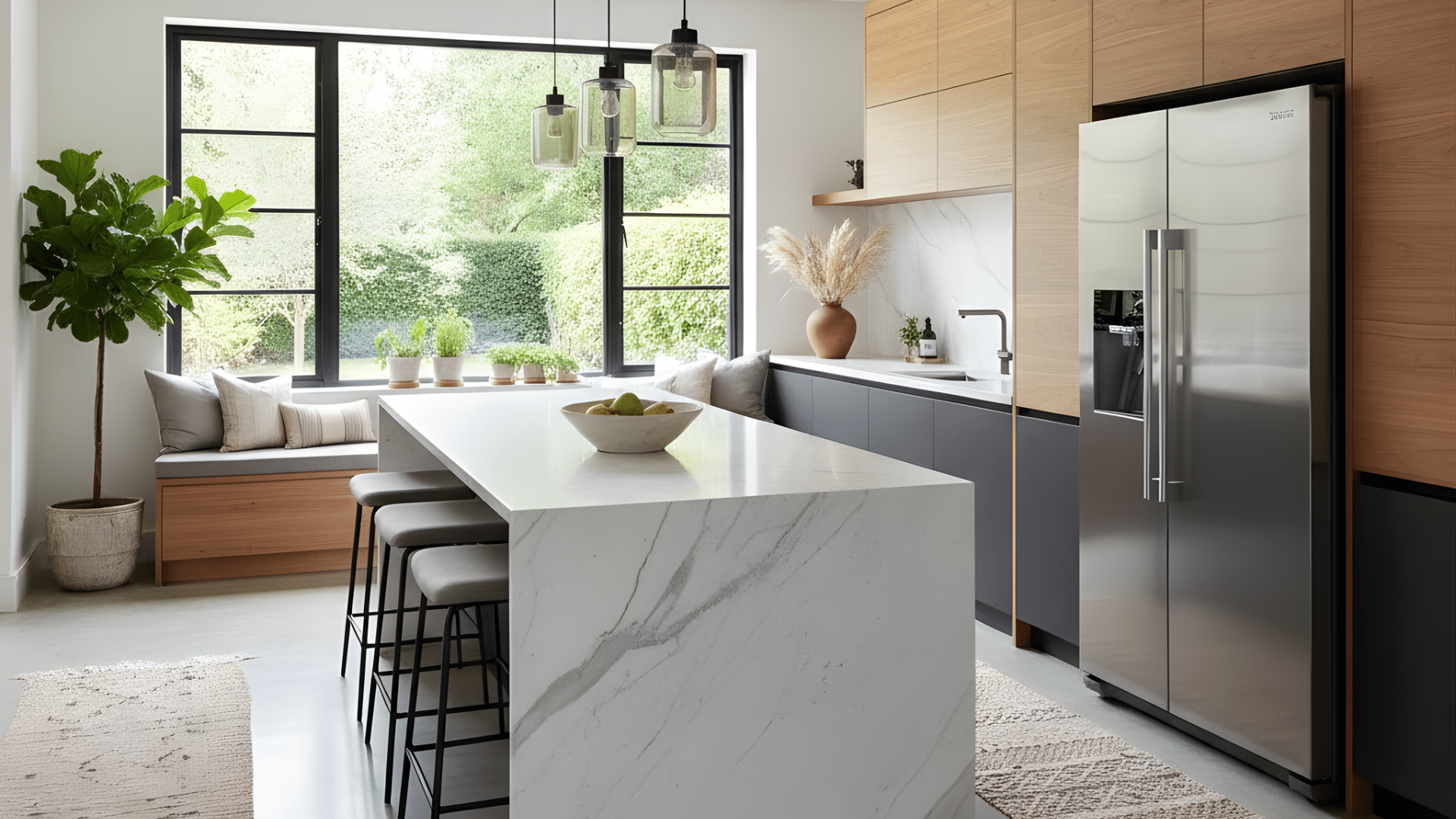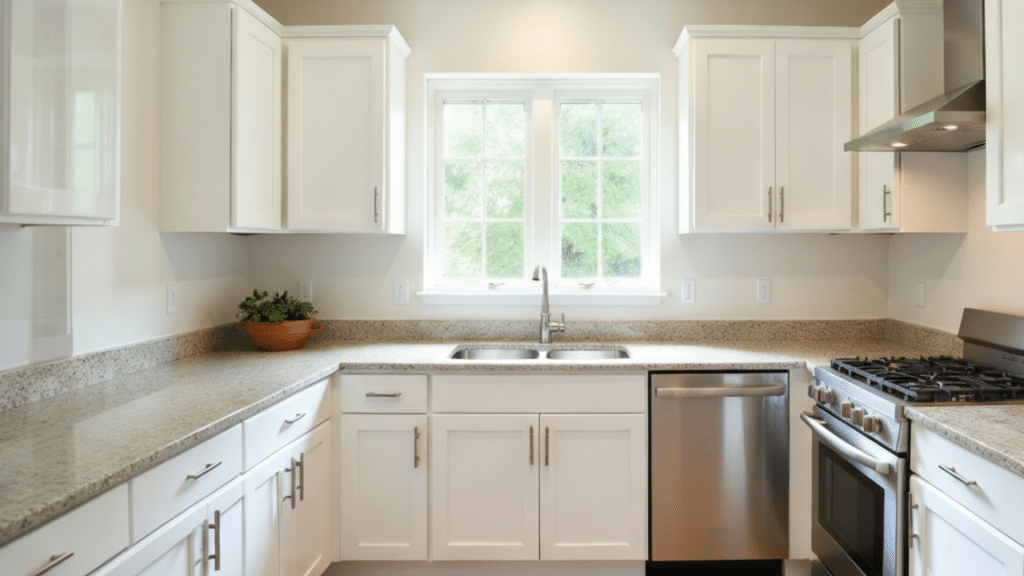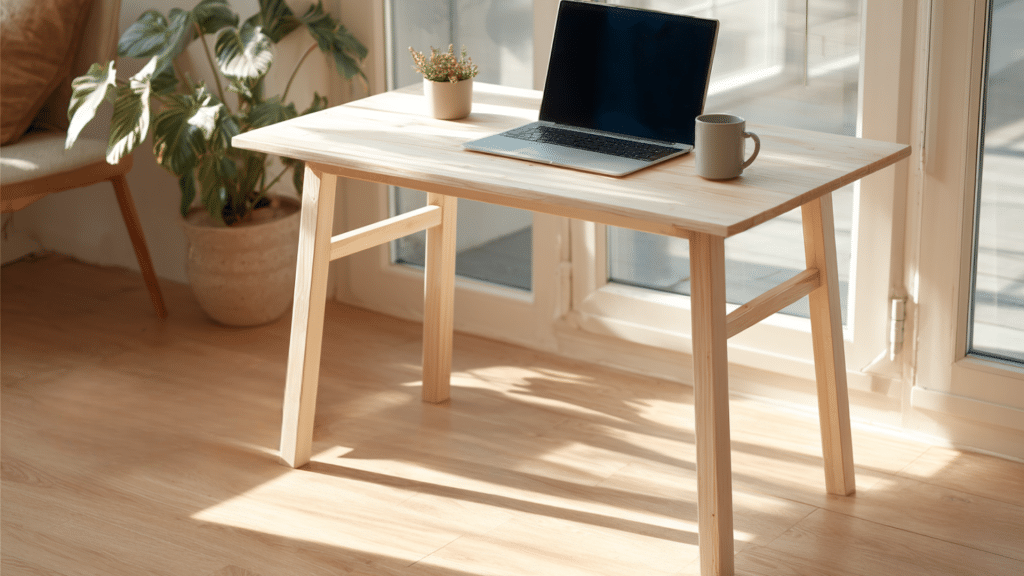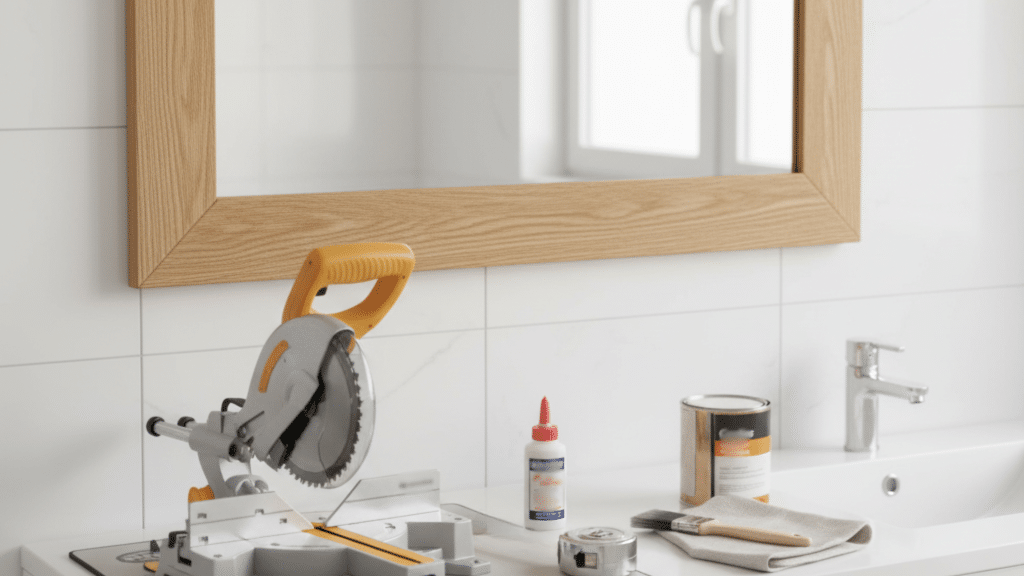Shopping for a new refrigerator means dealing with confusing measurements and wondering if it’ll actually fit in the kitchen.
Nobody wants to order an appliance only to find out it’s too wide for the space or won’t make it through the doorway.
This blog promises clear answers about standard refrigerator size across all popular styles.
Types of Refrigerator and Their Sizes and Dimensions
Different refrigerator styles come with their own size specifications. Each type serves different kitchen needs and space requirements.
Top Freezer
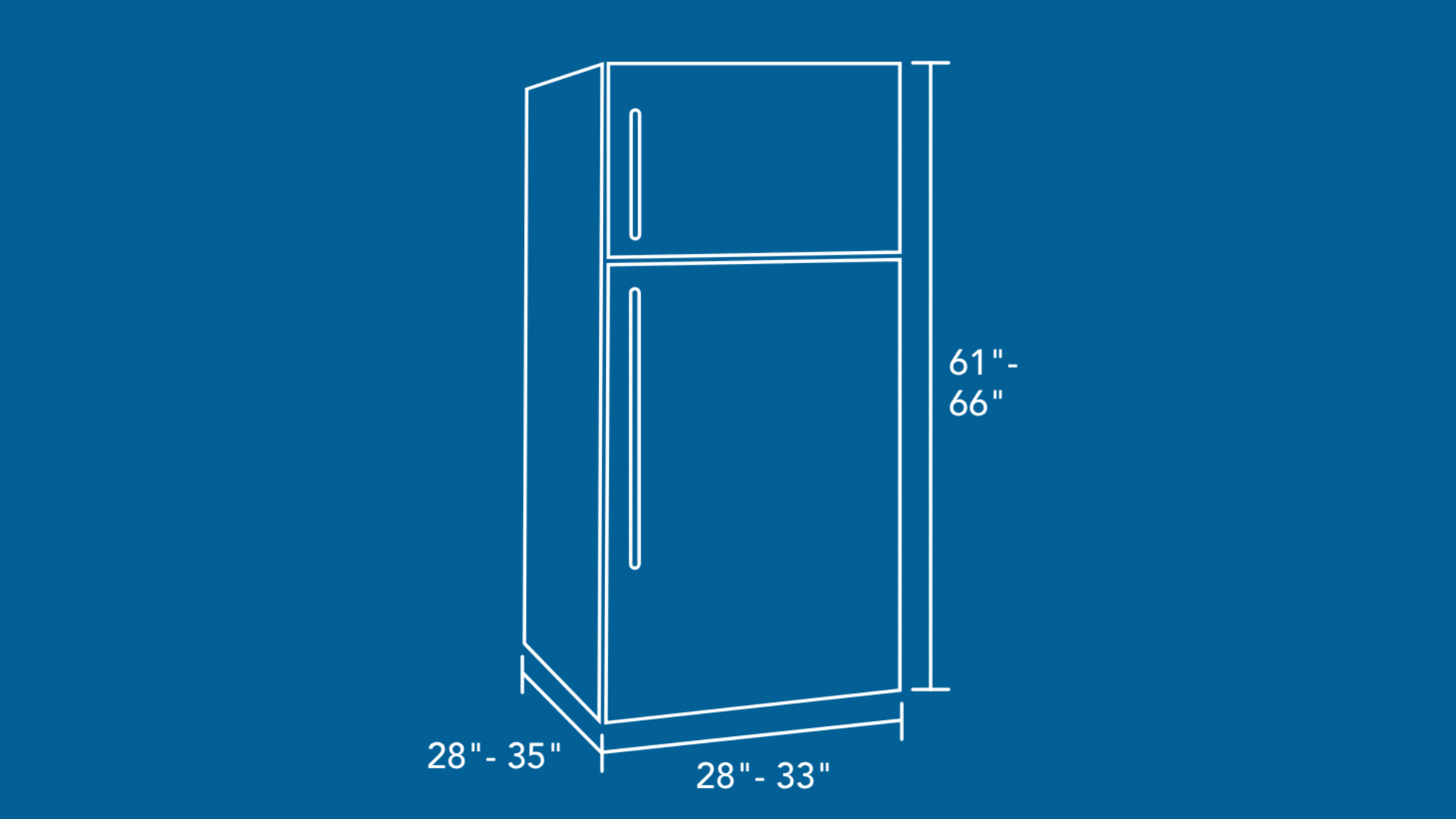
Top freezer refrigerators remain the most traditional style in kitchens.
The freezer compartment sits above the main cooling section, and these units typically cost less than other configurations while using less energy.
| Dimension | Measurement Range |
|---|---|
| Height | 61 to 66 inches |
| Width | 28 to 33 inches |
| Depth | 28 to 35 inches |
| Capacity | 14 to 24 cubic feet |
Bottom Freezer
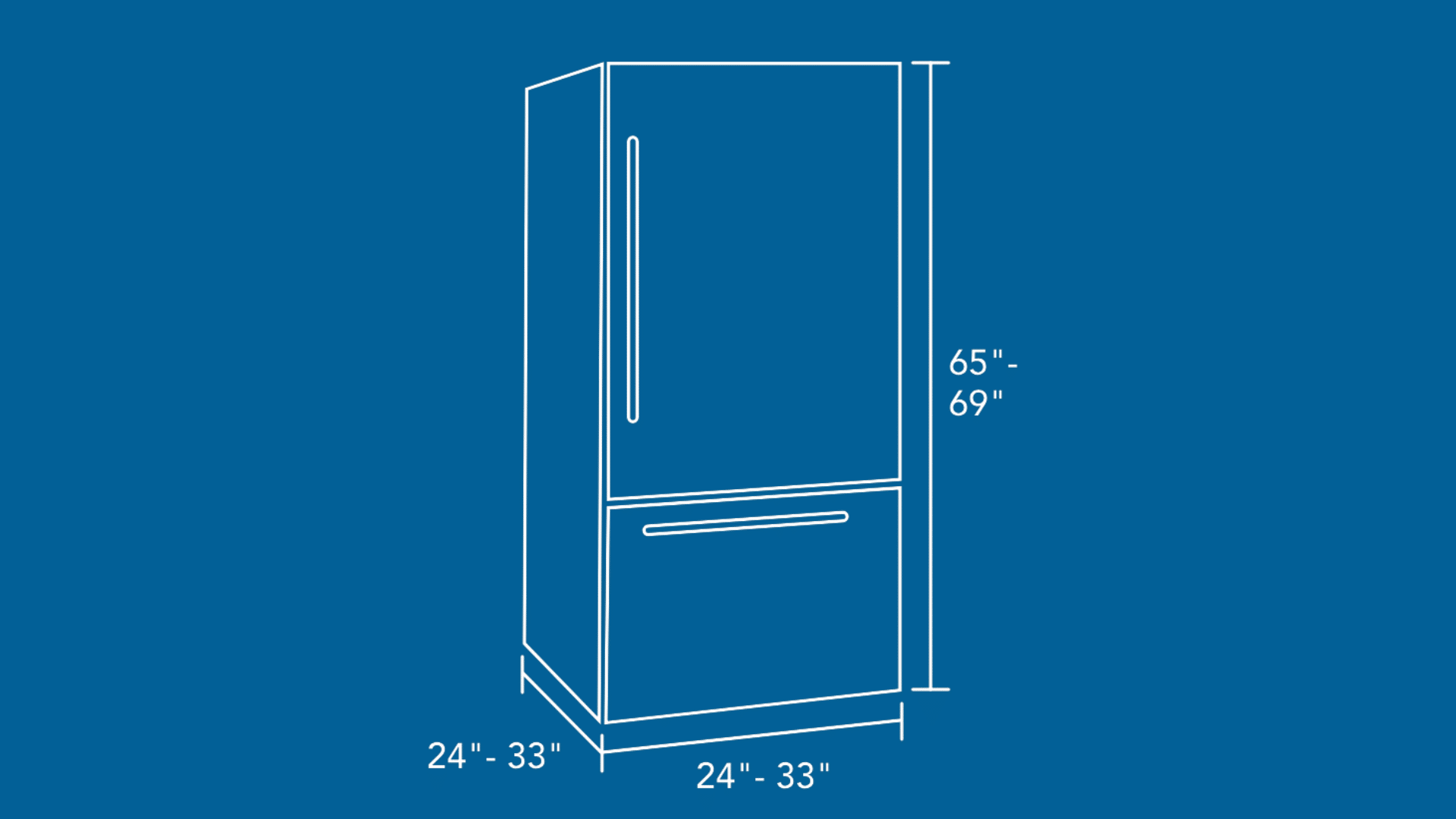
Bottom freezer models put the freezer drawer at floor level and position fresh food storage at eye height.
This layout makes grabbing everyday items easier since most people access the refrigerator section more often than the freezer.
| Dimension | Measurement Range |
|---|---|
| Height | 65 to 69 inches |
| Width | 24 to 33 inches |
| Depth | 24 to 33 inches |
| Capacity | 19 to 25 cubic feet |
French Door Refrigerator
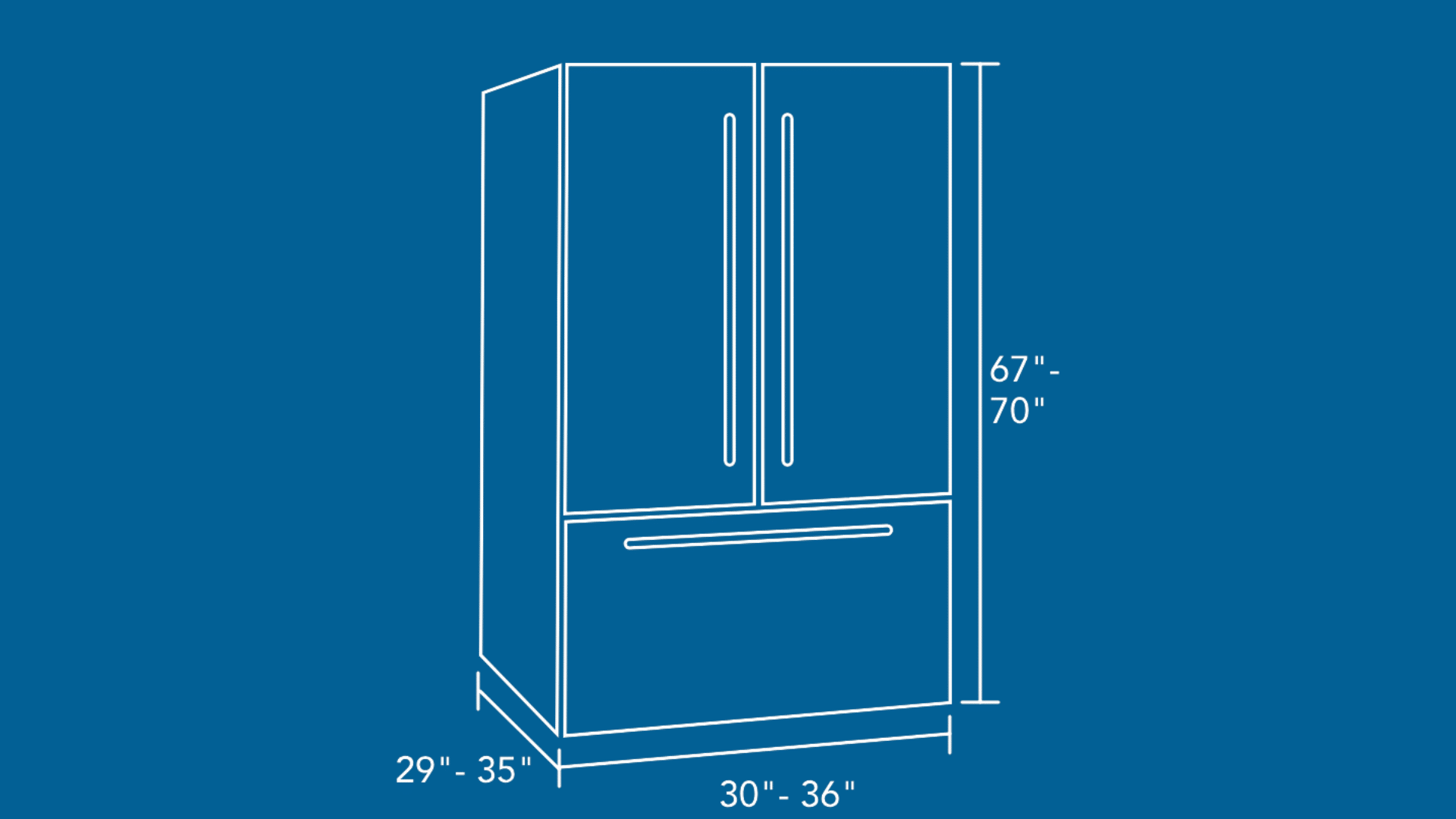
French door refrigerators feature two doors on top that open to the fresh food section and a freezer drawer below.
These models offer wide shelves and premium features, but they need extra clearance space for both doors to swing open fully.
| Dimension | Measurement Range |
|---|---|
| Height | 67 to 70 inches |
| Width | 30 to 36 inches |
| Depth | 29 to 35 inches |
| Capacity | 20 to 28 cubic feet |
Side-By-Side Refrigerator
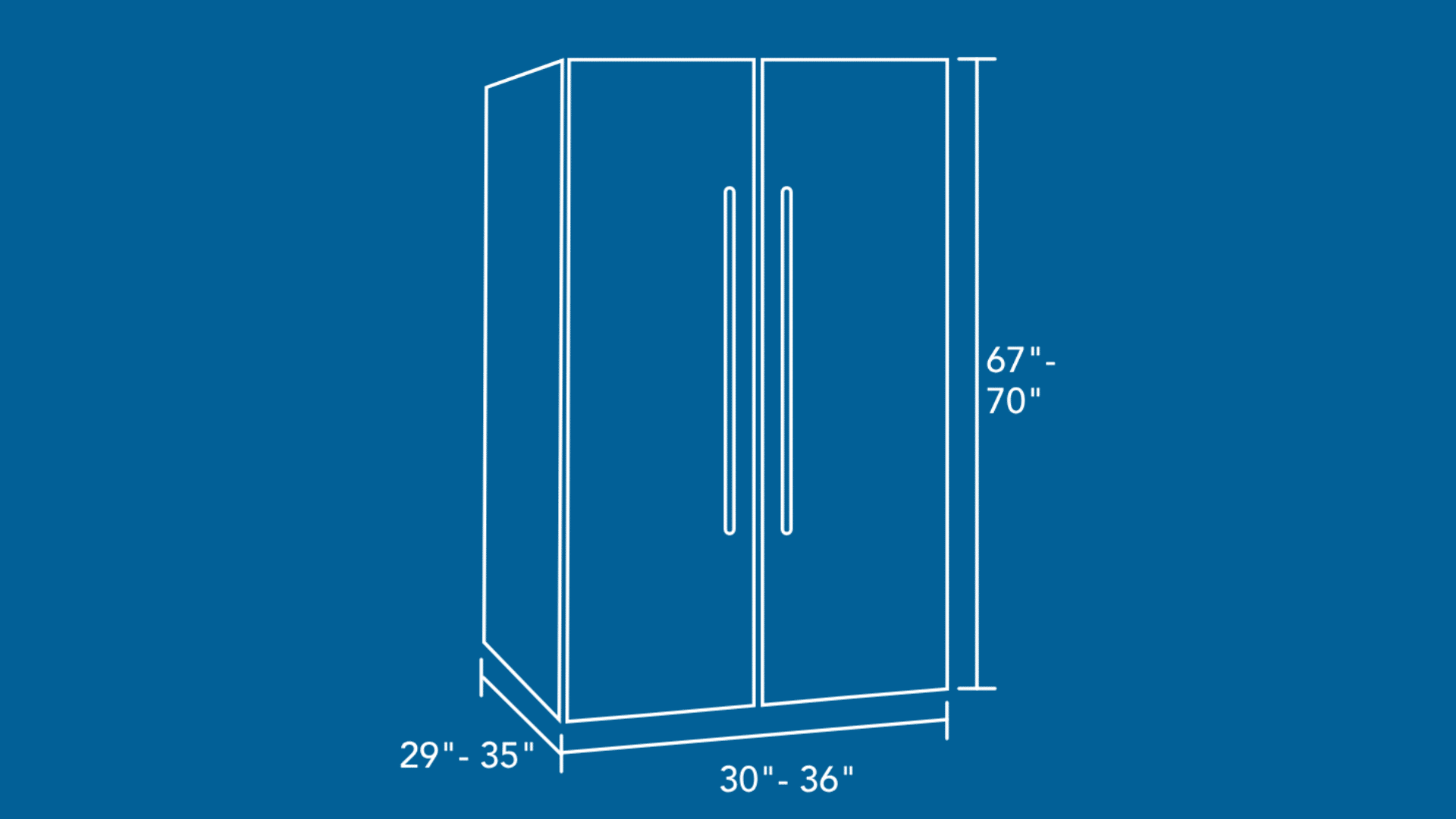
Side-by-side refrigerators split vertically down the middle with the freezer on one side and fresh food on the other.
Both sections run the full height of the unit, and the narrow door swing works well in tight kitchens with limited clearance.
| Dimension | Measurement Range |
|---|---|
| Height | 67 to 70 inches |
| Width | 30 to 36 inches |
| Depth | 29 to 35 inches |
| Capacity | 22 to 31 cubic feet |
The above are all standard refrigerator sizes across all common styles.
How to Measure Fridge Dimensions
Measuring for a new standard fridge size involves more than just checking the size of the old one. Accurate measurements prevent delivery day disasters and ensure the new unit fits perfectly.
1. Measure the Height
Start by measuring from the floor to the bottom of any overhead cabinets or the ceiling. Use a tape measure and record the exact number in inches.
Don’t forget to account for at least one inch of clearance space above the refrigerator for proper ventilation and heat release.
2. Measure the Width
Measure the space between the walls or cabinets where the refrigerator will sit. Take measurements at three different points: top, middle, and bottom.
Walls aren’t always perfectly straight, so use the smallest measurement to be safe. Leave at least half an inch on each side for fitting.
3. Measure the Depth
Measure from the back wall to the front edge of the counter or cabinet face. Standard counters stick out about 25 inches from the wall.
Counter-depth refrigerators align with this measurement, while standard-depth models project several inches beyond. Decide which look works better for the kitchen layout.
4. Check Door Swing Clearance
Measure the space in front of the refrigerator opening. Doors need room to swing open fully, typically 90 degrees or more.
French door and side-by-side models require less swing space than single-door units. Also, check for nearby walls, islands, or other obstacles that might block the doors.
5. Measure Doorways and Hallways
Measure every doorway, hallway, and tight corner between the delivery entrance and the final location. Include the width and height of each opening.
Delivery teams often need to remove doors or tilt refrigerators at angles. Knowing these measurements ahead of time prevents last-minute surprises and potential damage.
Which Refrigerator Style is a Fit for Your Kitchen?
Choosing the right refrigerator depends on kitchen size and cooking habits.
Side-by-side models work well in narrow spaces. They offer easy access to both sections.
French door refrigerators suit families who need fresh food storage. The wide shelves hold party platters and large dishes.
Top freezer styles are budget-friendly options. They fit smaller kitchens perfectly.
Bottom freezer designs put fresh food at eye level. This means less bending to grab daily items.
Each style offers different benefits. You should measure their space first. Then pick the model that fits their needs best.
Factors to Consider Besides Size
Size matters, but it’s not the only thing to think about when buying a refrigerator. Several other factors affect how well the appliance works in a kitchen.
Door Swing Direction
Check which way the refrigerator doors open and whether they can be reversed. Some kitchens need a left-hand swing while others require a right-hand opening
The door direction affects traffic flow and how easily people can access the contents inside.
Energy Efficiency
Look for Energy Star ratings that show how much electricity the refrigerator uses annually.
More efficient models cost more upfront but save money on utility bills over time. The yellow EnergyGuide Label provides yearly operating cost estimates for comparison shopping.
Storage Capacity
Consider how much food storage space the family actually needs. Cubic footage indicates total capacity, but interior layout matters too.
Adjustable shelves, door bins, and drawer configurations make a big difference in what fits inside and how organized everything stays.
Kitchen Layout
Think about where the refrigerator sits in relation to the stove and sink. The classic work triangle keeps these three elements close together for efficiency.
Also consider whether the refrigerator blocks walkways or creates tight spots when doors are open.
Budget Constraints
Set a realistic price range before shopping begins. Basic models start around a few hundred dollars, while premium units cost several thousand.
Installation fees, delivery charges, and old appliance removal add extra costs. Extended warranties are optional, but they provide peace of mind for expensive purchases
Keep These Tips in Mind when Choosing a Refrigerator
Picking the right standard refrigerator size depends on household needs and kitchen space. These practical tips help narrow down the options and make the selection process easier.
- Calculate based on household size: Plan for 4 to 6 cubic feet of refrigerator space per person in the home. A family of four needs at least 16 to 24 cubic feet total.
- Measure twice, buy once: Double-check all measurements before ordering. Include height, width, depth, and clearance space. Write the numbers down instead of relying on memory.
- Check the door clearance: Make sure doors can open at least 90 degrees without hitting walls, cabinets, or islands. Test the swing path with the actual measurements.
- Compare interior layouts: Two refrigerators with the same exterior size can have different usable space inside. Look at shelf arrangements and drawer configurations carefully.
- Leave ventilation space: Refrigerators need air circulation around them to work efficiently. Leave at least one inch at the top and half an inch on the sides.
Wrapping It Up
Getting the right standard refrigerator size makes all the difference in kitchen functionality.
Measure the available space carefully before shopping, and remember to account for door clearance and ventilation needs.
Check the manufacturer’s specifications closely since measurements can vary between brands. Don’t forget to measure doorways and hallways too, because the refrigerator needs to fit through them during delivery.
Ready to shop? Use these standard measurements as a starting point.

